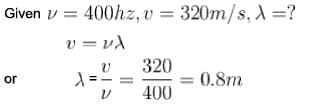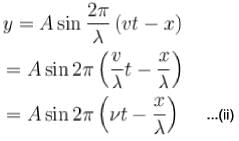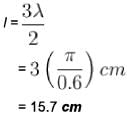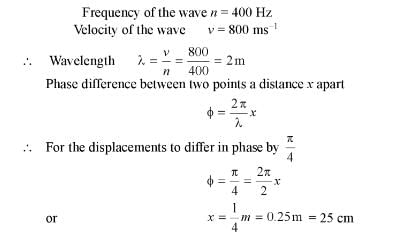Waves NAT Level - 1 - IIT JAM MCQ
10 Questions MCQ Test - Waves NAT Level - 1
Plane harmonic waves of frequency 500 Hz are produced in air with displacement amplitude 1 x 10-3 cm. Deduce energy flux in J/m2) in the wave (density of air =1.29 gm/lit, speed of sound in air = 340 m/s).
Plane harmonic waves of frequency 500 Hz are produced in air with displacement amplitude 1 x 10-3 cm. Deduce pressure amplitude (in N/m2). (density of air = 1.29 gm/lit, speed of sound in air = 340m/s)
If the frequency of a tuning fork is 400 Hz and the velocity of sound in air is 320 m/s, find how far does the sound travel (in m) while the fork completes 30 vibrations?
The vibrations of a string of length 60 cm fixed at both ends are represented by the equation

where x and y are in cm and t in seconds. What is the maximum displacement of point x = 5cm ?
A transverse harmonic wave of amplitude 0.02 m is generated at one end (x = 0) along horizontal string by a tuning fork of frequency 500 Hz. At a given instant of time, the displacement of the particle at x = 0.1 m is 0.005 m and that of the particle at x = 0.2 m is 0.005 m. Calculate the wavelength of the wave?
Equations of a stationary and a travelling waves are as follows :

The phase difference between two points 
 respectively for the two waves. The ratio
respectively for the two waves. The ratio  is :
is :
A simple harmonic wave travelling x-axis is given by y = 5 sin 2π ( 0.2t - 0.5x) [x is in m and t in s]. Calculate the amplitude (in m ).
The equation for the vibration of a string fixed at both ends vibrating in its third harmonic is given by :
 The length of the string is :
The length of the string is :
A wave of frequency 400 Hz is travelling with a velocity 800 m/s. How far are two points situated whose displacement differs in phase by  ?
?
The amplitude of wave disturbance propagating in positive x-axis is given by  at t = 0 and
at t = 0 and at t= 2s, where x and y are in meters. The shape of the disturbance does not change during the propagation. The velocity (in m/s) of the wave is :
at t= 2s, where x and y are in meters. The shape of the disturbance does not change during the propagation. The velocity (in m/s) of the wave is :

















































